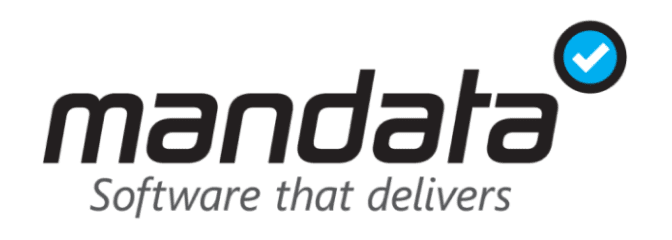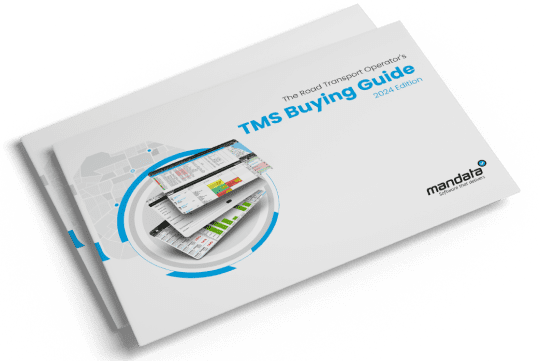How Route Optimisation and TMS Complement each other
Often like a game of chess, planning collection and delivery routes takes strategy and skill. Growing customer expectations and demands, and increasing costs have pushed many transport and logistics operators to improve delivery efficiency and streamline operations further to reduce costs and achieve greater efficiencies. This has led many down the path of route optimisation tools. While these technologies do offer benefits for hauliers, it is crucial to understand how Route Optimisation and TMS software can be used together, to their full potential.
Here, we will explore some of the challenges that certain haulage operators may encounter if choosing to utilise route optimisation software. We will also explore where a transport management system (TMS) and route optimisation can work together to add value to the road transport business, supporting planners in their work and simplifying certain work types.
What is Route Optimisation?
Route optimisation is a method of transport planning, where routing software uses addresses, a range of factors and other restrictions to plot the most efficient route for vehicles. Typically, route optimisation software has been used by couriers with a fleet of vans or transport operators carrying out highly complex, time-sensitive multi-drop work. Also, businesses such as manufacturers, that don’t have a full-time transport planner or dedicated transport team in place can also benefit.
What is TMS (Transport Management Software)?
A transport management system (TMS) simplifies day-to-day processes for hauliers by digitising many manual and paper-based tasks; from receiving and pricing orders, to planning and executing the work, receiving proof of delivery and producing invoices. A TMS is dependent on a tranport planner’s expertise; their knowledge of their customer requirements and preferences, the work being undertaken, as well as their local route knowledge to allocate and plan haulage work.
Where Route Optimisation works well
Route optimisation is most effective in scenarios involving multi-drop operations with multiple collection and delivery points in densely populated areas with complex road networks. In these situations, the potential for significant time and cost savings is greater. Courier operators, or Amazon-style transport businesses would benefit most from this software, as often routing for hundreds of drops per day, is time-consuming and often complex. Other businesses such as manufacturers, without their own transport team would also benefit from route optimisation, as the software can automate many of decisions normally taken by a transport planner.
Where route optimisation may not work so well
On the flip side, route optimisation may be less effective in rural areas with limited road options and regions with frequent road closures or severe traffic fluctuations. These unpredictable factors can hinder accurate route planning, and this is where the value of human intervention and monitoring by fully trained, industry-knowledgeable planners really pays off.
If haulage operations are looking to simplify other processes, as well as planning, such as proof of delivery (POD), real time tracking and driver behaviour, daily vehicle checks or warehouse management, a dedicated transport management solution would be more suited, as all these modules can work together, bringing live data into one system, to provide greater visibility to the haulage operator, and their customers.
Where a TMS and Route Optimisation complement each other
There are instances where TMS providers can integrate with route optimisation tools, aligning their haulage work with route optimisation. Businesses with larger job volumes that operate within a multi-drop style of work such as pallet network operators, but still requiring a planner’s industry knowledge, could benefit from an integration between the two platforms. The TMS can be used for the job creation, along with relevant customer and load details, job codes, and any other useful information regarding that job. Then, the information can be fed straight into a route optimisation tool to create the most efficient route for that job.
The advantages of Route Optimisation
Time savings: Using route optimisation reduces a transport planners work load. Routes can be planned in seconds, leaving the planner to review and refine, or accept the optimised results, before outputting the plan.
Reduced wear and tear: Optimised routes are not just about time and cost savings; they also contribute to reduced wear and tear on vehicles, as less miles are being travelled. This can extend the lifespan of the fleet and lower maintenance costs.
Compliance: Route optimisation software often includes features that help drivers comply with regulations in transport and logistics as it helps hauliers adhere to regulations like driver’s hours, weight restrictions as well as environmental regulations.
The disadvantages of Route Optimisation
Disjointed systems: Often hauliers may use route optimisation tools, separate to their own transport management system. This relies on information being transferred between the TMS, spreadsheets and a route optimisation tool, which can be time-consuming. It can be alot easier to use a TMS with integrated route optimisation using a single interface.
Customer know-how: Hauliers heavily rely on their transport planners for their knowledge and experience of working with their customers and the sites they deliver to. There may be specific challenges to be considered when planning and it can be difficult to ensure all these factors are taken into account by route optimisation tools.
If plans need to change: Depending on how tightly integrated the route optimisation tools are, with the haulier’s TMS, they may not be flexible enough to allow quick updates to be made, should plans change.
Conclusion
In conclusion, route optimisation is a valuable tool in the UK haulage industry, offering advantages for some operators such as time saving and faster planning. However, it’s important to consider the specific challenges and potential drawbacks. Successful implementation often depends on finding the right balance between automated optimisation and human judgement, or if both could work in tangent.
To find out more about whether a TMS with integrated route optimsiation is the more suitable platform to accommodate your operation, submit a demo request below to speak to one of our product specialists.

